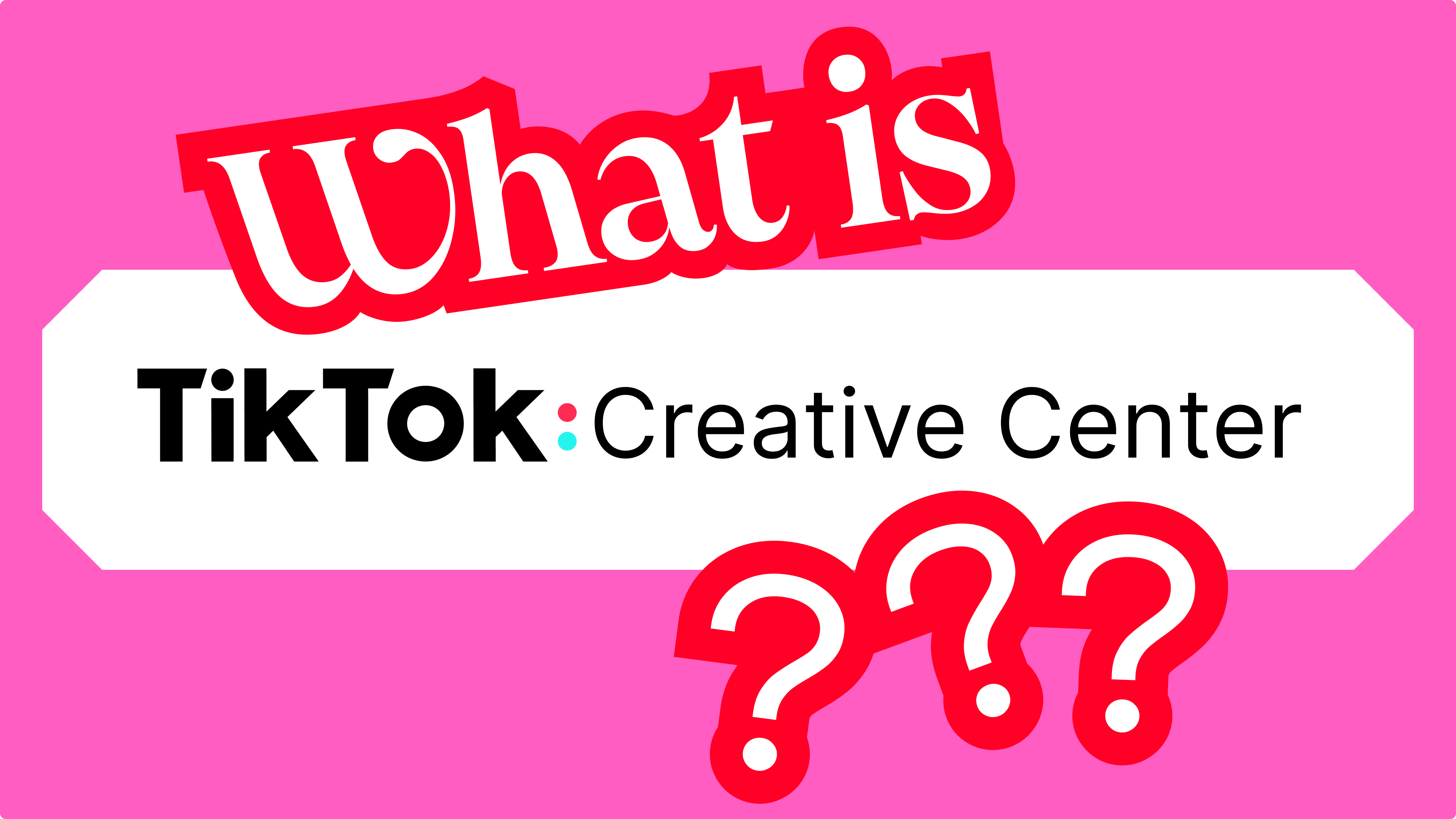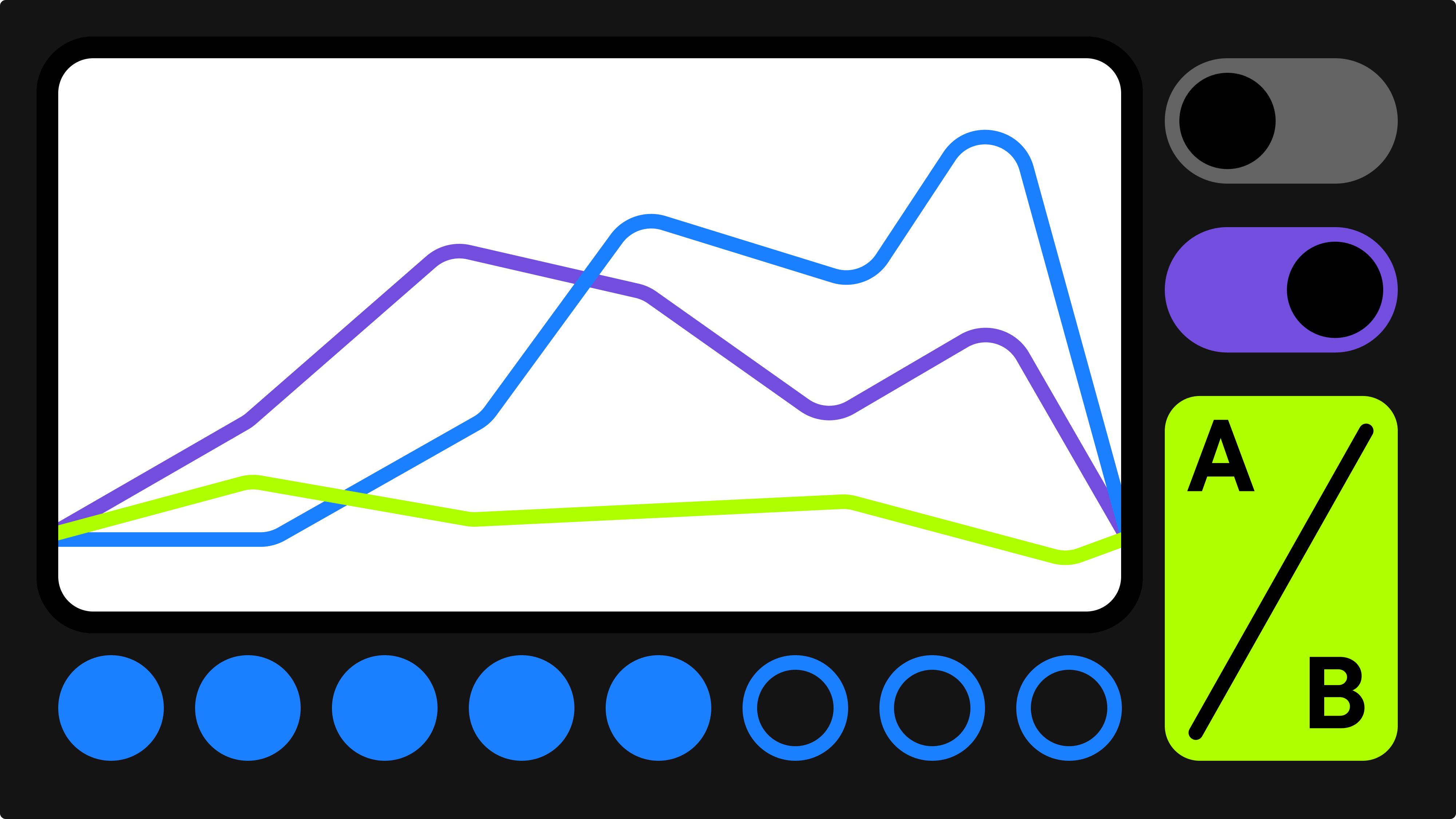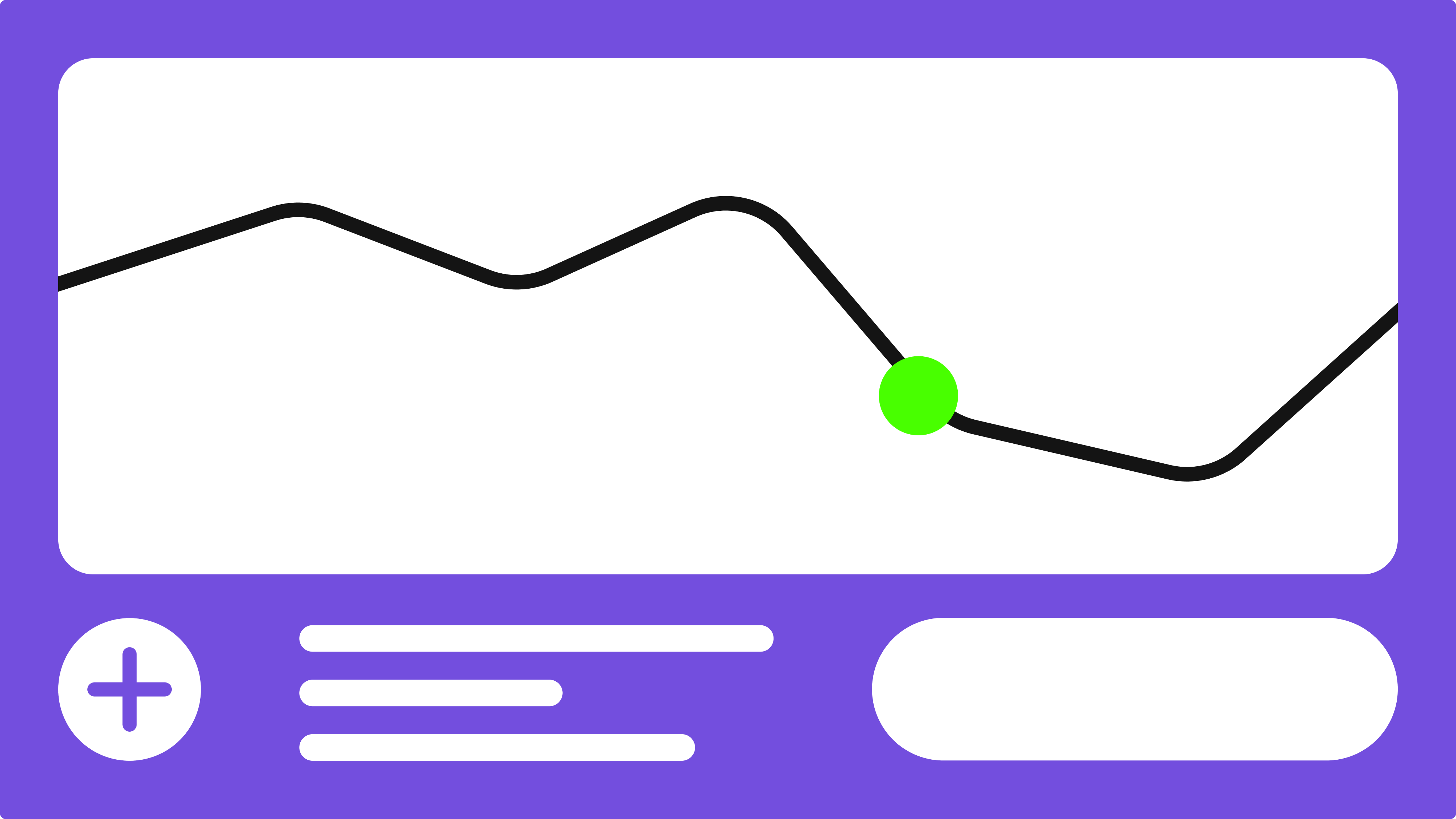How can creative strategy in advertising bridge the gap between brand vision and high-performing campaigns?
It’s a question more and more teams are asking. Creative strategy, once seen as the subjective “brand” side of advertising, is fast becoming one of the biggest performance levers.
Creative strategy in advertising is what turns generic assets and scattered ideas into growth engines that produce measurable outcomes.
This guide dives into how creative strategy can connect the dots between creativity and conversion. Discover how tools like Bïrch can help you replace guesswork with KPI-driven creative planning. Start building testable concepts and link every asset and decision back to business outcomes.
Key takeaways
- Creative strategy is the backbone of high-performing advertising campaigns, aligning audience, message, and format.
- From clear briefs to modular creative systems, repeatable processes and structure drive scalable results.
- Audience insight matters more than demographics. Pain points, motivations, and objections shape winning concepts.
- Bïrch connects creative with performance, enabling fast feedback loops, automated actions, and smarter iteration across teams and platforms.
What is a creative strategy, and why does it matter?
By “creative strategy,” we mean how a brand uses visuals, messaging, tone, and storytelling to connect with its audience.
Without a clear strategy, even strong creatives that look good on the surface can fail to deliver results.
Imagine two ads with identical spend:
- One hastily launches a trend-driven ad that gets quick views but doesn’t connect with the brand or audience.
- The other takes inspiration from a trend but adapts it with audience insights, KPIs, and the brand’s own style, turning it into an ad that’s relevant and authentic.
The first fades quickly because it isn’t anchored in the brand or audience. The second, guided by insight and clear goals, gives the creative a better chance to connect and perform.
Core elements of a scalable creative strategy
The most effective strategies give creativity room to shine while grounding it in audience insight and business objectives.
Creativity at the root of the strategy
Being creative in advertising means finding new ways to communicate and being ready to solve challenges like declining performance or creative fatigue. This can involve rethinking formats, styles, or approaches so the work feels fresh and relevant.
For example, a beauty brand sees that its product shots are no longer driving clicks. The team notices that audiences prefer authentic content, so they test short creator videos showing everyday routines. These quickly bring in more engagement and conversions.

Audience insights that go beyond demographics
Demographics alone don’t explain why someone chooses one brand over another. Good insights come from data, which shows you the what and when, and empathy, which explains the why. Together, they turn patterns into insights you can use to shape creative direction.
For example, the data might reveal that your audience engages more at night. Empathy helps you see whether they’re tired and looking for relief or just relaxing and open to humor. This insight might guide how you frame the ad.
Balancing business goals with brand expression
Brand expression is the brand’s persona. It defines the story you tell to the public and how you show up across channels.
To balance that expression with business goals, you want to ensure your campaigns drive measurable outcomes without losing authenticity. Business goals set the destination—sales, retention, or awareness—while brand expression shapes how the journey feels to the audience.
Defining KPIs to measure creative effectiveness
A creative strategy should contain clear metrics from the beginning, tailored to campaign stage and platform.
Here’s a quick framework:
Use tools like Bïrch’s Explorer to monitor creative performance by KPI and quickly identify what’s moving the needle.
Defining KPIs also improves creative feedback. Clear performance data guides your next steps—so you don’t need to guess what worked.
Creative strategy mistakes to avoid
Campaigns have many moving parts, so it’s common to overlook certain things. Three mistakes stand out:
- Mistaking execution for strategy: Be careful not to assume you have a strategy just because you’re producing lots of great ads. Those ads need a foundation.
- Focusing on structure over creativity: Teams need data and frameworks to guide decisions and reveal what works. But if structure becomes the only focus, campaigns can lose the originality and emotional pull that make them connect. Creativity gives you an edge.
- Ignoring iteration loops after launch: Creative strategy doesn’t end when a campaign goes live. Audiences change, platforms evolve, and trends fade fast. Iteration—testing variations, refining messages, and exploring new formats with purpose—keeps campaigns relevant and performing well over time.
What makes a creative resonate?
A creative that resonates is what you get when your team knows the brand inside out and works together to bring it to life.
That means strategists who understand the audience and market. Designers and copywriters who translate those insights into something people actually want to engage with. Media buyers who know how to position and deliver it. And everyone aligned on what the creative needs to achieve.
On top of that foundation, outstanding creatives also have qualities that make them stick: originality, emotional resonance, and storytelling.
Originality
Presenting your brand’s message in a fresh, unexpected way will capture your audience’s attention. Originality is about avoiding clichés and predictable formulas. Thinking outside the box will unlock ideas that surprise and engage people while still staying true to the brand. Done well, originality builds stronger emotional connections, helping a brand be recognized and remembered.
Take for instance the 2025 MTV Video Music Awards red carpet: Doja Cat shocked everyone by biting into what looked like a tube of M·A·C lipstick. The “lipstick” turned out to be a hyper-realistic chocolate replica created for the stunt, which also revealed her new role as a global brand ambassador. Everyone expects makeup touch-ups on the red carpet—but not edible lipsticks. It sparked conversation and felt on brand for Doja Cat.
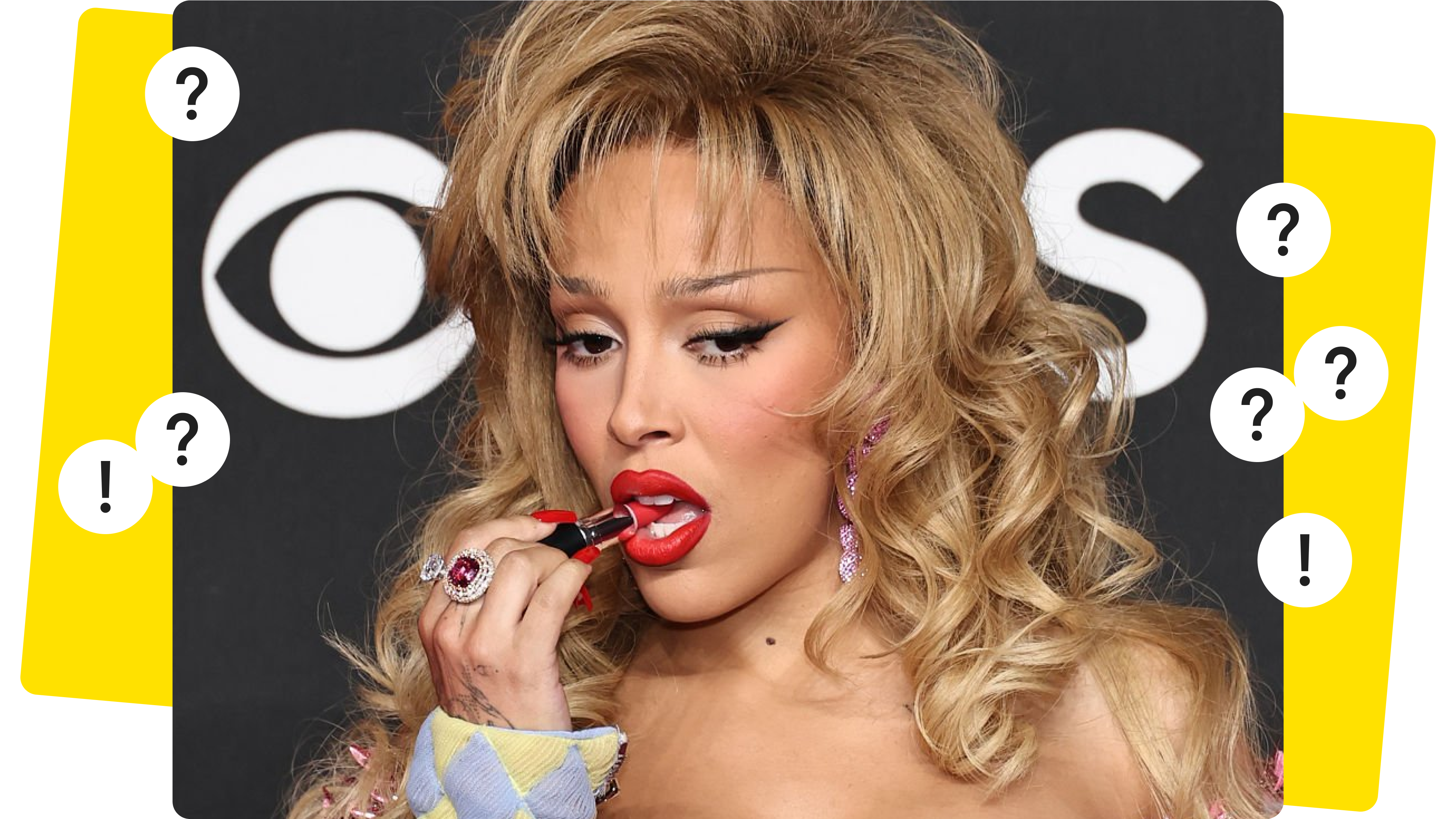
Emotional resonance
Emotional resonance happens when an ad affects how people feel. When brands focus on a single emotion and build their creative around it, it shines through and the connection lasts. The ad is harder to forget.
Look at Google’s Super Bowl spot for the Pixel 9 phone, which highlighted its new Gemini Live feature through the story of a father navigating his “dream job”—raising his daughter, from her baby years until she leaves for college. The AI tool was front and center, but the heart of the ad was the tear-jerking narrative. It worked because it connected technology to something universal: parenthood.
Storytelling
Storytelling gives structure to the creative. Instead of just showing features or listing benefits, a story draws people in with characters, conflict, and resolution. With compelling storytelling, the brand doesn’t have to shout its message—the narrative does the work.
Volkswagen did this particularly well with their Volkswagen Atlas ad: Mateo, the family’s youngest child, shares how he’s usually overlooked. But when his parents bring home the Volkswagen Atlas, he finally has the back seat to himself, with his own space and controls. The simple story is told through Mateo’s voice and perspective, making it relatable and engaging. By the end, the roomy car is the hero of a small but meaningful family story.
From brief to breakthrough: structuring the creative process
Great ad creatives materialize, not by accident, but from a repeatable process—one that moves from clear input to concept, execution, and performance review.
A strong creative strategy builds that pipeline from day one.
What makes a creative brief work
The most effective briefs find a balance between clarity and creative freedom.
A useful brief contains:
- An objective: What business result are we trying to achieve?
- Audience tension: What is the emotional or functional trigger?
- Message hierarchy: What should the user hear first, second, third?
- Platform context: Where will this run, and what constraints matter?
- Success metrics: How will we know it’s working?
A good brief provides direction—but still leaves space for interpretation and creativity. Treat it as a springboard, not a script. Including performance examples from past tests or successful ads can help align teams on what success looks like without limiting creative thinking.
Creating a repeatable idea development pipeline
Idea development often happens in bursts: someone has a concept, mocks it up, and rolls it out. A more sustainable system builds idea flow into the process.
Structure it like this:
- Brief: Align on strategy and performance goals.
- Concepting sprint: Generate 5–10 angles per objective.
- Prioritize: Filter by feasibility, novelty, and test-readiness.
- Production: Match formats to channels.
- Deployment: Run the creative in a matched test structure.
- Review: Collect insights and brief the next round.
With Bïrch, there’s no need to constantly check campaign performance. Get Slack alerts and respond quickly when creative performance drops.
Adapting creative strategy across channels
A scalable creative strategy balances consistency with flexibility. The message is the same, but how you present it changes based on the platform and how people use it.
Tailoring creative for performance vs awareness
Whether your ad runs in a performance or awareness channel influences how it should look and feel.
- Performance channels, like Meta, Google, and TikTok, are where people come ready to act. They expect direct, clear messaging that helps them decide quickly.
- Awareness channels, like YouTube, LinkedIn, and Display, are better for building memory and shaping perception. Here, people are more open to stories, values, and longer narratives—as long as the content holds their attention.
Platform constraints
Before production, make sure you map out each platform’s limitations and guidelines.
Consider things like aspect ratios and image size, length limits, and how sound is treated. Working with these factors in mind helps you avoid rework and sets the campaign up to perform.
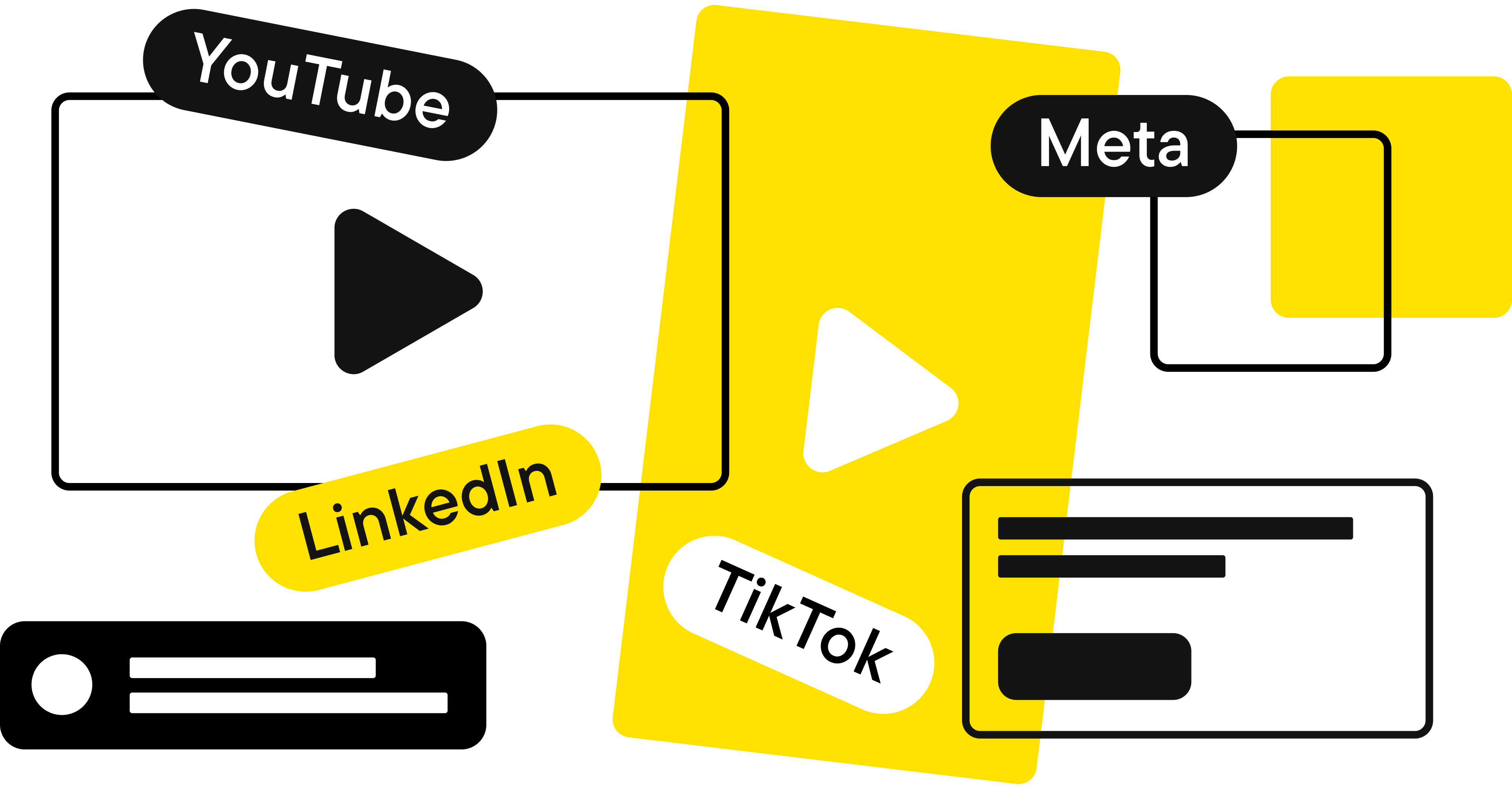
Platform-specific notes
- Meta (Facebook & Instagram): Prioritize clarity in the first 2 seconds, use motion and contrast to discourage users from scrolling past, and test UGC-style content against branded formats.
- YouTube: Works best with sound-on storytelling. Open strong, pace dynamically, and adjust CTAs for pre-roll vs mid-roll placements.
- TikTok: Authenticity is key. Lean on UGC, trends, and raw cuts. Flows like “Hook → conflict → twist → CTA” tend to outperform polished formats.
- LinkedIn: A professional context encourages longer attention spans. It’s a strong fit for thought leadership, case studies, or stat-driven hooks, ideally in a founder or team voice.
- Display/Programmatic: Space is limited, so keep hooks short and direct. Focus on one value prop or offer and use visuals that stand out in cluttered environments.
With a channel checklist built into your process—and performance insights from tools like Bïrch—you can adapt creatives for each platform without losing the consistency of your core message.
Integrating creative strategy with testing & iteration
How creative strategy informs test design
Creative testing reveals which ideas, messages, or designs connect best with your audience and drive the strongest results.
A clear creative strategy shapes what gets tested by defining the big questions, such as:
- Do people respond more to humor or sincerity?
- Does lifestyle storytelling resonate more than product features?
- Which visuals, headlines, or CTAs drive stronger engagement?
The strategy then guides decisions around test design: A/B or multivariate testing? Which success metrics? How long should the test run for reliable data?
With strategy as the roadmap, testing moves beyond guesswork and becomes a structured way to prove what really resonates.
Using test learnings to refine your creative direction
So, your creative testing has yielded results. That’s great! But don’t stop at “this version won.” Ask why.
Look for patterns:
- Do product-focused visuals consistently beat lifestyle imagery?
- Are testimonials outperforming benefit-driven ads?
- Is engagement higher with question-led CTAs?
Feed these insights back into your next brief, not just your report.
When to pivot vs persist
Not every underperforming concept is a bad idea. Some just need reworking. Others need to be cut quickly.
Pivot when:
- The hook is weak, but the core message resonates.
- The format isn’t right for the platform (e.g., long video on TikTok).
- The feedback suggests a mismatch between tone and audience.
Persist when:
- Performance is stable but below average.
- ROAS is rising slowly over time.
- The ad set is still in the learning phase.
Stop when:
- CTR drops below 0.5% and doesn’t recover.
- CPA is 2x above target after multiple tweaks.
- Frequency rises but performance drops.
Use Bïrch’s automation rules to pause, scale, or rotate creatives based on real-time thresholds.
Tools and tactics to supercharge your creative strategy
A strong creative strategy is a system. And like any system, it performs better when powered by the right tools and methods.
From AI support to feedback loops, here’s how to make your creative work smarter and faster.
Leveraging automation and creative scoring tools
Automation helps remove guesswork and enables you to react faster when creative performance shifts.
What to automate:
- Creative performance alerts via Slack or email when KPIs drop
- Rotation rules to pause fatigued ads or scale outperformers
- Score-based prioritization to promote top creatives across channels

Use Bïrch’s Rules engine to automate actions like: “Pause ads with CTR less than 20% over 3 days” or “Scale creatives with ROAS more than 3.0 for 5 days.”
Strategic use of AI for concept development
AI tools can support idea generation, but they work best when guided by strategy.
How to use AI productively:
- Generating 10 variations on a winning angle
- Drafting alternative headlines or CTAs for a fixed message
- Summarizing reviews or surveys into copy-ready benefit statements
Approaches that don’t work so well:
- Asking AI to write an entire ad without input
- Using generic prompts like “make a good product ad”
Frameworks for briefing and scaling ad ideas
Use templated frameworks to streamline your creative process and build repeatable systems.
Example: Creative briefing grid
You can then apply this grid across formats:
- Meta: carousel with quotes
- TikTok: UGC-style explainer
- Display: static ad with key quote
Where Bïrch fits in
Creative strategy is about planning, execution, and iteration. That’s where Bïrch Explorer can help you.
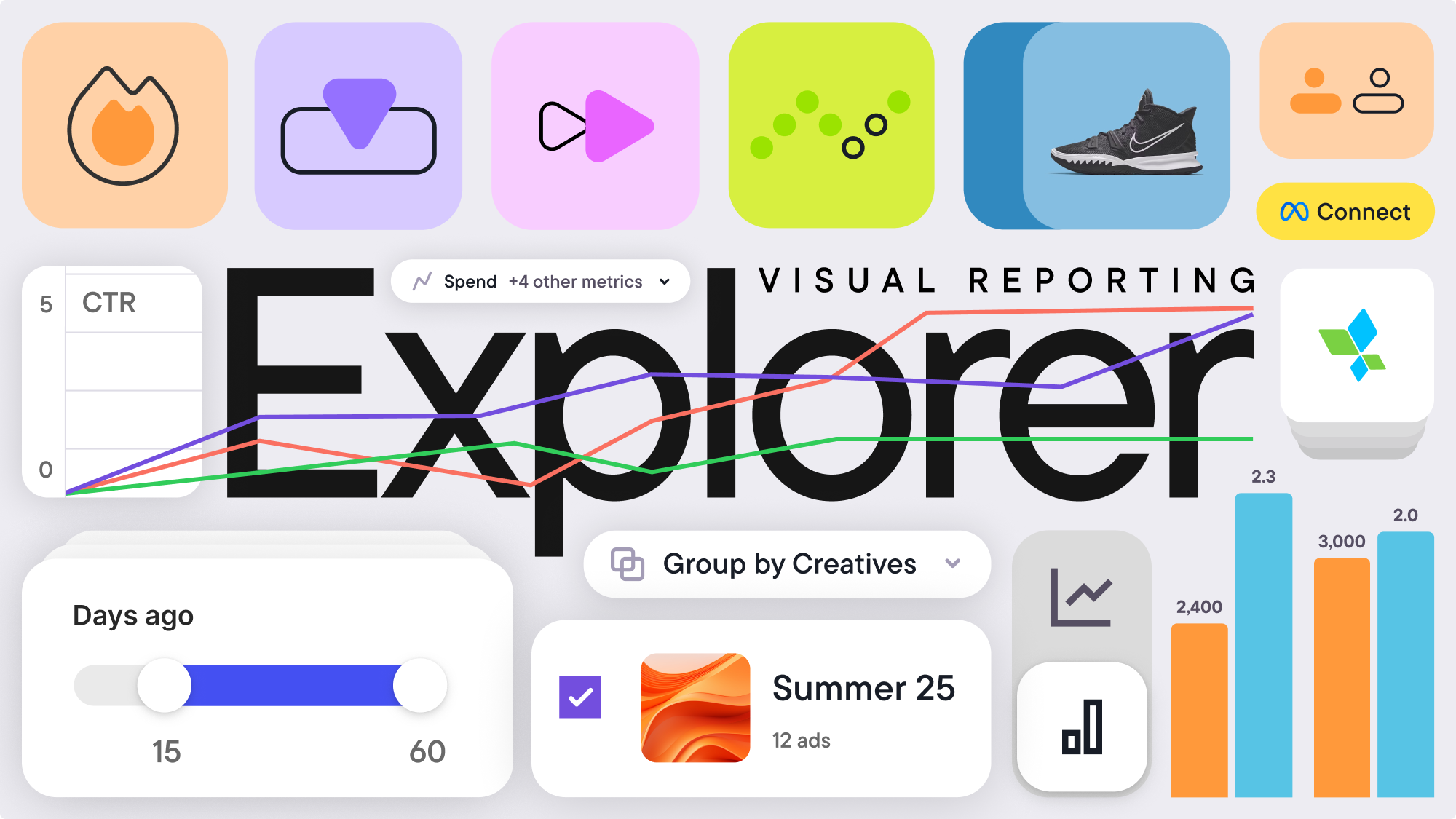
Explorer connects the creative process to real-time performance data, enabling faster feedback, smarter decisions, and tighter collaboration.
Sync creative strategy with performance data in real time
With Explorer, you can track how specific creative elements impact KPIs like CTR, ROAS, and CPA—broken down by audience, format, and platform.
It helps by letting you:
- Tag ad creatives by message angle, tone, and visual type.
- View performance patterns across campaigns.
- Set alerts to take action when performance shifts—before it affects your budget.
- View ad performance data and compare results across accounts and platforms—all in one place.
Turn test results into actionable briefs and iteration insights
Testing can surface strong performers—but the value comes from how you apply those insights to future creative decisions.
Explorer turns raw results into usable insights that inform your next creative sprint, keeping you moving in the right direction.
You can:
- Export top-performing combinations into a brief template.
- Identify fatigue windows and asset decay trends.
- Compare test outcomes across channels and campaigns.
Streamline reporting and creative feedback loops

Bïrch supports smoother workflows between creative, media, and analytics teams. With shared dashboards and automated rules, everyone sees what’s working—no spreadsheets needed and no information silos.
Use it to:
- Sync Slack alerts when creatives need rotation.
- Automate asset pausing based on custom thresholds.
FAQs
What is creative strategy in advertising?
Creative strategy is the process of planning how to deliver the right message to the right audience in the right format—in a way that aligns with business goals. It guides concept development, production, and performance evaluation.
What should a creative strategy contain?
A strong creative strategy includes:
- Business objectives and KPIs
- Audience insight beyond demographics
- Message hierarchy
- Platform considerations
- Testing and iteration plans
What is an example of a creative strategy?
Imagine a skincare brand discovers its customers are skeptical of harsh chemicals.
Their strategy: use testimonials from dermatologists, show product ingredients clearly, and run UGC ads on TikTok explaining the science—all aiming for a sub-$15 CPA.
The brand’s strategy outlines what to say, how to say it, where to say it, and why it matters—key elements of a creative advertising strategy in marketing.
How does creative strategy impact performance?
Creative strategy defines what you test, how you execute, and how you measure success. It ensures every asset is built with purpose—and can be adapted based on what’s actually working.
What tools help with creative strategy?
Top tools in 2025 include:
- Bïrch: for testing, rules, and creative feedback loops
- Slack: for team alignment and alerts
- Notion or Airtable: for brief templates and iteration tracking
Looker: for performance dashboards
What happened to Revealbot?
Revealbot has a new look and a new name—we’re now Bïrch! The change highlights our focus on bringing together the best of automation and creative teamwork.
How can creative strategy in advertising bridge the gap between brand vision and high-performing campaigns?
It’s a question more and more teams are asking. Creative strategy, once seen as the subjective “brand” side of advertising, is fast becoming one of the biggest performance levers.
Creative strategy in advertising is what turns generic assets and scattered ideas into growth engines that produce measurable outcomes.
This guide dives into how creative strategy can connect the dots between creativity and conversion. Discover how tools like Bïrch can help you replace guesswork with KPI-driven creative planning. Start building testable concepts and link every asset and decision back to business outcomes.
Key takeaways
- Creative strategy is the backbone of high-performing advertising campaigns, aligning audience, message, and format.
- From clear briefs to modular creative systems, repeatable processes and structure drive scalable results.
- Audience insight matters more than demographics. Pain points, motivations, and objections shape winning concepts.
- Bïrch connects creative with performance, enabling fast feedback loops, automated actions, and smarter iteration across teams and platforms.
What is a creative strategy, and why does it matter?
By “creative strategy,” we mean how a brand uses visuals, messaging, tone, and storytelling to connect with its audience.
Without a clear strategy, even strong creatives that look good on the surface can fail to deliver results.
Imagine two ads with identical spend:
- One hastily launches a trend-driven ad that gets quick views but doesn’t connect with the brand or audience.
- The other takes inspiration from a trend but adapts it with audience insights, KPIs, and the brand’s own style, turning it into an ad that’s relevant and authentic.
The first fades quickly because it isn’t anchored in the brand or audience. The second, guided by insight and clear goals, gives the creative a better chance to connect and perform.
Core elements of a scalable creative strategy
The most effective strategies give creativity room to shine while grounding it in audience insight and business objectives.
Creativity at the root of the strategy
Being creative in advertising means finding new ways to communicate and being ready to solve challenges like declining performance or creative fatigue. This can involve rethinking formats, styles, or approaches so the work feels fresh and relevant.
For example, a beauty brand sees that its product shots are no longer driving clicks. The team notices that audiences prefer authentic content, so they test short creator videos showing everyday routines. These quickly bring in more engagement and conversions.

Audience insights that go beyond demographics
Demographics alone don’t explain why someone chooses one brand over another. Good insights come from data, which shows you the what and when, and empathy, which explains the why. Together, they turn patterns into insights you can use to shape creative direction.
For example, the data might reveal that your audience engages more at night. Empathy helps you see whether they’re tired and looking for relief or just relaxing and open to humor. This insight might guide how you frame the ad.
Balancing business goals with brand expression
Brand expression is the brand’s persona. It defines the story you tell to the public and how you show up across channels.
To balance that expression with business goals, you want to ensure your campaigns drive measurable outcomes without losing authenticity. Business goals set the destination—sales, retention, or awareness—while brand expression shapes how the journey feels to the audience.
Defining KPIs to measure creative effectiveness
A creative strategy should contain clear metrics from the beginning, tailored to campaign stage and platform.
Here’s a quick framework:
Use tools like Bïrch’s Explorer to monitor creative performance by KPI and quickly identify what’s moving the needle.
Defining KPIs also improves creative feedback. Clear performance data guides your next steps—so you don’t need to guess what worked.
Creative strategy mistakes to avoid
Campaigns have many moving parts, so it’s common to overlook certain things. Three mistakes stand out:
- Mistaking execution for strategy: Be careful not to assume you have a strategy just because you’re producing lots of great ads. Those ads need a foundation.
- Focusing on structure over creativity: Teams need data and frameworks to guide decisions and reveal what works. But if structure becomes the only focus, campaigns can lose the originality and emotional pull that make them connect. Creativity gives you an edge.
- Ignoring iteration loops after launch: Creative strategy doesn’t end when a campaign goes live. Audiences change, platforms evolve, and trends fade fast. Iteration—testing variations, refining messages, and exploring new formats with purpose—keeps campaigns relevant and performing well over time.
What makes a creative resonate?
A creative that resonates is what you get when your team knows the brand inside out and works together to bring it to life.
That means strategists who understand the audience and market. Designers and copywriters who translate those insights into something people actually want to engage with. Media buyers who know how to position and deliver it. And everyone aligned on what the creative needs to achieve.
On top of that foundation, outstanding creatives also have qualities that make them stick: originality, emotional resonance, and storytelling.
Originality
Presenting your brand’s message in a fresh, unexpected way will capture your audience’s attention. Originality is about avoiding clichés and predictable formulas. Thinking outside the box will unlock ideas that surprise and engage people while still staying true to the brand. Done well, originality builds stronger emotional connections, helping a brand be recognized and remembered.
Take for instance the 2025 MTV Video Music Awards red carpet: Doja Cat shocked everyone by biting into what looked like a tube of M·A·C lipstick. The “lipstick” turned out to be a hyper-realistic chocolate replica created for the stunt, which also revealed her new role as a global brand ambassador. Everyone expects makeup touch-ups on the red carpet—but not edible lipsticks. It sparked conversation and felt on brand for Doja Cat.

Emotional resonance
Emotional resonance happens when an ad affects how people feel. When brands focus on a single emotion and build their creative around it, it shines through and the connection lasts. The ad is harder to forget.
Look at Google’s Super Bowl spot for the Pixel 9 phone, which highlighted its new Gemini Live feature through the story of a father navigating his “dream job”—raising his daughter, from her baby years until she leaves for college. The AI tool was front and center, but the heart of the ad was the tear-jerking narrative. It worked because it connected technology to something universal: parenthood.
Storytelling
Storytelling gives structure to the creative. Instead of just showing features or listing benefits, a story draws people in with characters, conflict, and resolution. With compelling storytelling, the brand doesn’t have to shout its message—the narrative does the work.
Volkswagen did this particularly well with their Volkswagen Atlas ad: Mateo, the family’s youngest child, shares how he’s usually overlooked. But when his parents bring home the Volkswagen Atlas, he finally has the back seat to himself, with his own space and controls. The simple story is told through Mateo’s voice and perspective, making it relatable and engaging. By the end, the roomy car is the hero of a small but meaningful family story.
From brief to breakthrough: structuring the creative process
Great ad creatives materialize, not by accident, but from a repeatable process—one that moves from clear input to concept, execution, and performance review.
A strong creative strategy builds that pipeline from day one.
What makes a creative brief work
The most effective briefs find a balance between clarity and creative freedom.
A useful brief contains:
- An objective: What business result are we trying to achieve?
- Audience tension: What is the emotional or functional trigger?
- Message hierarchy: What should the user hear first, second, third?
- Platform context: Where will this run, and what constraints matter?
- Success metrics: How will we know it’s working?
A good brief provides direction—but still leaves space for interpretation and creativity. Treat it as a springboard, not a script. Including performance examples from past tests or successful ads can help align teams on what success looks like without limiting creative thinking.
Creating a repeatable idea development pipeline
Idea development often happens in bursts: someone has a concept, mocks it up, and rolls it out. A more sustainable system builds idea flow into the process.
Structure it like this:
- Brief: Align on strategy and performance goals.
- Concepting sprint: Generate 5–10 angles per objective.
- Prioritize: Filter by feasibility, novelty, and test-readiness.
- Production: Match formats to channels.
- Deployment: Run the creative in a matched test structure.
- Review: Collect insights and brief the next round.
With Bïrch, there’s no need to constantly check campaign performance. Get Slack alerts and respond quickly when creative performance drops.
Adapting creative strategy across channels
A scalable creative strategy balances consistency with flexibility. The message is the same, but how you present it changes based on the platform and how people use it.
Tailoring creative for performance vs awareness
Whether your ad runs in a performance or awareness channel influences how it should look and feel.
- Performance channels, like Meta, Google, and TikTok, are where people come ready to act. They expect direct, clear messaging that helps them decide quickly.
- Awareness channels, like YouTube, LinkedIn, and Display, are better for building memory and shaping perception. Here, people are more open to stories, values, and longer narratives—as long as the content holds their attention.
Platform constraints
Before production, make sure you map out each platform’s limitations and guidelines.
Consider things like aspect ratios and image size, length limits, and how sound is treated. Working with these factors in mind helps you avoid rework and sets the campaign up to perform.

Platform-specific notes
- Meta (Facebook & Instagram): Prioritize clarity in the first 2 seconds, use motion and contrast to discourage users from scrolling past, and test UGC-style content against branded formats.
- YouTube: Works best with sound-on storytelling. Open strong, pace dynamically, and adjust CTAs for pre-roll vs mid-roll placements.
- TikTok: Authenticity is key. Lean on UGC, trends, and raw cuts. Flows like “Hook → conflict → twist → CTA” tend to outperform polished formats.
- LinkedIn: A professional context encourages longer attention spans. It’s a strong fit for thought leadership, case studies, or stat-driven hooks, ideally in a founder or team voice.
- Display/Programmatic: Space is limited, so keep hooks short and direct. Focus on one value prop or offer and use visuals that stand out in cluttered environments.
With a channel checklist built into your process—and performance insights from tools like Bïrch—you can adapt creatives for each platform without losing the consistency of your core message.
Integrating creative strategy with testing & iteration
How creative strategy informs test design
Creative testing reveals which ideas, messages, or designs connect best with your audience and drive the strongest results.
A clear creative strategy shapes what gets tested by defining the big questions, such as:
- Do people respond more to humor or sincerity?
- Does lifestyle storytelling resonate more than product features?
- Which visuals, headlines, or CTAs drive stronger engagement?
The strategy then guides decisions around test design: A/B or multivariate testing? Which success metrics? How long should the test run for reliable data?
With strategy as the roadmap, testing moves beyond guesswork and becomes a structured way to prove what really resonates.
Using test learnings to refine your creative direction
So, your creative testing has yielded results. That’s great! But don’t stop at “this version won.” Ask why.
Look for patterns:
- Do product-focused visuals consistently beat lifestyle imagery?
- Are testimonials outperforming benefit-driven ads?
- Is engagement higher with question-led CTAs?
Feed these insights back into your next brief, not just your report.
When to pivot vs persist
Not every underperforming concept is a bad idea. Some just need reworking. Others need to be cut quickly.
Pivot when:
- The hook is weak, but the core message resonates.
- The format isn’t right for the platform (e.g., long video on TikTok).
- The feedback suggests a mismatch between tone and audience.
Persist when:
- Performance is stable but below average.
- ROAS is rising slowly over time.
- The ad set is still in the learning phase.
Stop when:
- CTR drops below 0.5% and doesn’t recover.
- CPA is 2x above target after multiple tweaks.
- Frequency rises but performance drops.
Use Bïrch’s automation rules to pause, scale, or rotate creatives based on real-time thresholds.
Tools and tactics to supercharge your creative strategy
A strong creative strategy is a system. And like any system, it performs better when powered by the right tools and methods.
From AI support to feedback loops, here’s how to make your creative work smarter and faster.
Leveraging automation and creative scoring tools
Automation helps remove guesswork and enables you to react faster when creative performance shifts.
What to automate:
- Creative performance alerts via Slack or email when KPIs drop
- Rotation rules to pause fatigued ads or scale outperformers
- Score-based prioritization to promote top creatives across channels

Use Bïrch’s Rules engine to automate actions like: “Pause ads with CTR less than 20% over 3 days” or “Scale creatives with ROAS more than 3.0 for 5 days.”
Strategic use of AI for concept development
AI tools can support idea generation, but they work best when guided by strategy.
How to use AI productively:
- Generating 10 variations on a winning angle
- Drafting alternative headlines or CTAs for a fixed message
- Summarizing reviews or surveys into copy-ready benefit statements
Approaches that don’t work so well:
- Asking AI to write an entire ad without input
- Using generic prompts like “make a good product ad”
Frameworks for briefing and scaling ad ideas
Use templated frameworks to streamline your creative process and build repeatable systems.
Example: Creative briefing grid
You can then apply this grid across formats:
- Meta: carousel with quotes
- TikTok: UGC-style explainer
- Display: static ad with key quote
Where Bïrch fits in
Creative strategy is about planning, execution, and iteration. That’s where Bïrch Explorer can help you.

Explorer connects the creative process to real-time performance data, enabling faster feedback, smarter decisions, and tighter collaboration.
Sync creative strategy with performance data in real time
With Explorer, you can track how specific creative elements impact KPIs like CTR, ROAS, and CPA—broken down by audience, format, and platform.
It helps by letting you:
- Tag ad creatives by message angle, tone, and visual type.
- View performance patterns across campaigns.
- Set alerts to take action when performance shifts—before it affects your budget.
- View ad performance data and compare results across accounts and platforms—all in one place.
Turn test results into actionable briefs and iteration insights
Testing can surface strong performers—but the value comes from how you apply those insights to future creative decisions.
Explorer turns raw results into usable insights that inform your next creative sprint, keeping you moving in the right direction.
You can:
- Export top-performing combinations into a brief template.
- Identify fatigue windows and asset decay trends.
- Compare test outcomes across channels and campaigns.
Streamline reporting and creative feedback loops

Bïrch supports smoother workflows between creative, media, and analytics teams. With shared dashboards and automated rules, everyone sees what’s working—no spreadsheets needed and no information silos.
Use it to:
- Sync Slack alerts when creatives need rotation.
- Automate asset pausing based on custom thresholds.
FAQs
What is creative strategy in advertising?
Creative strategy is the process of planning how to deliver the right message to the right audience in the right format—in a way that aligns with business goals. It guides concept development, production, and performance evaluation.
What should a creative strategy contain?
A strong creative strategy includes:
- Business objectives and KPIs
- Audience insight beyond demographics
- Message hierarchy
- Platform considerations
- Testing and iteration plans
What is an example of a creative strategy?
Imagine a skincare brand discovers its customers are skeptical of harsh chemicals.
Their strategy: use testimonials from dermatologists, show product ingredients clearly, and run UGC ads on TikTok explaining the science—all aiming for a sub-$15 CPA.
The brand’s strategy outlines what to say, how to say it, where to say it, and why it matters—key elements of a creative advertising strategy in marketing.
How does creative strategy impact performance?
Creative strategy defines what you test, how you execute, and how you measure success. It ensures every asset is built with purpose—and can be adapted based on what’s actually working.
What tools help with creative strategy?
Top tools in 2025 include:
- Bïrch: for testing, rules, and creative feedback loops
- Slack: for team alignment and alerts
- Notion or Airtable: for brief templates and iteration tracking
Looker: for performance dashboards
What happened to Revealbot?
Revealbot has a new look and a new name—we’re now Bïrch! The change highlights our focus on bringing together the best of automation and creative teamwork.












